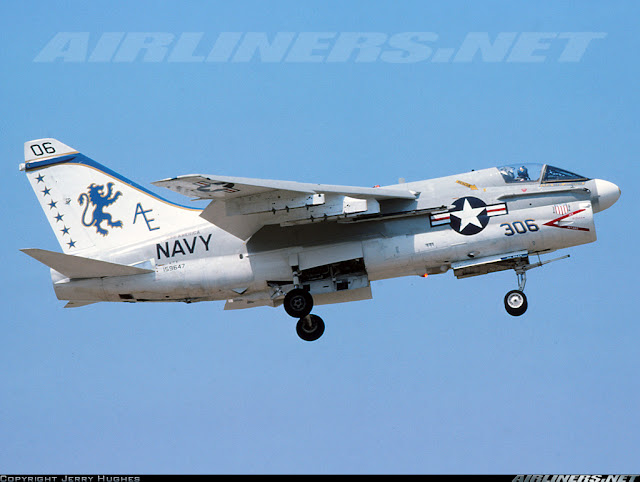Ελικόπτερο UH-1H Huey
Γενικά
To ελικόπτερο UH-1H, παγκοσμίως γνωστό ως το θρυλικό Huey (Χιούι) εμφανίστηκε με την ονομασία Βell Model 204 το 1956 και εγκαινίασε την εποχή των στροβιλοκινητήρων για τον στρατό των ΗΠΑ. Εισήλθε στην ενεργό υπηρεσία ως το ΗU-1 (αργότερα ως UH-1) Iroquois και πρωτοεμφανίστηκε στο Βιετνάμ το 1963. Ήταν ένα Ε/Π 9 θέσεων, πολλαπλών ρόλων το οποίο άλλαξε ριζικά τα δεδομένα και την σχεδίαση των επιχειρήσεων, προδίδοντας νέα έννοια στην 3η διάσταση του πεδίου της μάχης, εκτελώντας αεροδιακομιδές (MedEvac), εναέριες εφόδους, μαζικές μεταφορές μικρών κλιμακίων χωρίς τη χρήση αλεξιπτωτιστών καθώς και αποστολές εγγύς υποστήριξης.
Μεταφορικό Ελικόπτερο UH-1H Iroquois
Το πλήρες όνομα του ελικοπτέρου είναι Bell UH-1H Iroquois (Huey) και προφέρεται "Ιροκουά" από την ομώνυμη φυλή των ιθαγενών της Βόρειας Αμερικής. Το "Χιούι" είναι ένα παρατσούκλι που έχει επικρατήσει και αποτελεί φωνητικό αναγραμματισμό των αρχικών UH-1. Πρόκειται για το πλέον επιτυχημένο στρατιωτικό ελικόπτερο στον κόσμο, καθώς κατασκευάστηκε σε τεράστιους αριθμούς και χρησιμοποιήθηκε από τον στρατό 48 και πλέον χωρών.
H μαζική παραγωγή του UH-1H για τον στρατό των ΗΠΑ ξεκίνησε το 1967 και τρία χρόνια αργότερα, στο αποκορύφωμα των πολεμικών επιχειρήσεων στο Βιετνάμ, οι Αμερικανοί διέθεταν εκεί πάνω από 3.900 ελικόπτερα, τα δύο τρίτα από τα οποία ήταν Heuy. Μέχρι τη λήξη της γραμμής παραγωγής το 1982 κατασκευάστηκαν περίπου 5.500 ελικόπτερα μονάχα εντός των Ηνωμένων Πολιτειών, ενώ σε αυτά θα πρέπει να προστεθούν τα προγράμματα συμπαραγωγής της μητρικής εταιρείας Bell σε Ιταλία, Γερμανία, Ταϊβάν, Ιαπωνία και Τουρκία. Η αντίστροφη μέτρηση για τον συγκεκριμένο τύπο ξεκίνησε το 2004, όταν ο αμερικανικός στρατός ξεκίνησε την ταχεία εφαρμογή προγράμματος γενικής απόσυρσης.
Η Ελλάδα ξεκίνησε την παραλαβή των ελικοπτέρων UH-1 το 1969, η οποία ολοκληρώθηκε το 1981. Ο στόλος της Αεροπορίας Στρατού, με την παραλαβή μερικών ακόμα μεταχειρισμένων από τον αμερικανικό στρατό το 1993, έφθασε να αριθμεί περίπου 100 ελικόπτερα του τύπου όμως σήμερα σχεδόν τα μισά μπορούν να θεωρηθούν επιχειρησιακώς διαθέσιμα. Ο δείκτης ατυχημάτων για τα UH-1H Huey παραμένει στα χαμηλά επίπεδα του 0,07, δηλαδή σε ένα μείζον ατύχημα ανά 62.500 ώρες πτήσης. Παρόλα αυτά, ο αριθμός των νεκρών φθάνει τους 23 σε πέντε αεροπορικά αυχήματα.
Βελτιωμένος Τύπος ΑΒ-212
Το ελικόπτερο ΑΒ-212 είναι το αποτέλεσμα μιας προσπάθειας της Βell να δώσει στο τυπικό Ηuey μεγαλύτερη ισχύ - που μεταφράζεται σε βελτιωμένες επιδόσεις, αλλά και σε αυξημένη ασφάλεια που απορρέει από την υιοθέτηση δύο κινητήρων. Μία από τις λιγότερο εμφανείς διαφορές από τα UΗ-1/ΑΒ-205 αφορά και την τοποθέτηση του ουραίου στροφείου στη δεξιά πλευρά του ελικοπτέρου για βελτίωση των χαρακτηριστικών αντιστάθμισης της ροπής. Οι χειριστές που προορίζονται για το ΑΒ-212 πρέπει να είναι ήδη διαθέσιμοι κυβερνήτες στο μονοκινητήριο Ηuey και στη συνέχεια μεταβαίνουν στο 4ο Τ.ΕΑΣ, όπου λειτουργεί το αντίστοιχο Σχολείο Μετεκπαίδευσης. Η διάρκεια της εκπαίδευσης είναι 3 εβδομάδες και εκεί ο χειριστής συμπληρώνει 10 ώρες προτού οριστεί συγκυβερνήτης. Στη συνέχεια δε και μετά τη συμπλήρωση 50 ωρών, είναι έτοιμος να μεταπηδήσει στη δεξιά θέση του θαλάμου διακυβέρνησης.
Πρόγραμμα Εκσυγχρονισμού
Στο παρελθόν, η Bell Helicopter Textron είχε παρουσιάσει σε συνεργασία με την Ελληνική Αεροπορική Βιομηχανία το εκσυγχρονισμένο UH-1 Ηuey ΙΙ, στις εγκαταστάσεις της δεύτερης στο Σχηματάρι. Με τον εκσυγχρονισμό που προτάθηκε η επιχειρησιακή ζωή του ελικοπτέρου επεκτείνεται στά 25 χρόνια, ενώ ταυτόχρονα επιτυγχάνεται μείωση του λειτουργικού κόστους κατά 50%, υποτριπλασιασμός των εργατοωρών συντήρησης και βελτίωση των επιδόσεων, ιδιαίτερα σε υψηλές θερμοκρασίες. Παράλληλα, με την υιοθέτηση του εκσυγχρονισμού η Bell αναλάμβανε εκ νέου την πλήρη ευθύνη του ελικοπτέρου στους τομείς της τεχνικής υποστήριξης, παροχής ανταλλακτικών, εγγύησης, ασφάλειας πτήσης, βιβλιογραφίας. κτλ.. που με την εισαγωγή της αρχικής έκδοσης σε υπηρεσία είχαν εκχωρηθεί ως αρμοδιότητες στον αμερικανικό στρατό.
Η έκδοση UH-1 Η Huey ΙΙ διατηρεί όλα τα αξιόπιστα και δοκιμασμένα στην πράξη συστήματα/υποσυστήματα του ελικοπτέρου, όπως το σύστημα καυσίμων, ενώ εισάγει σειρά βελτιώσεων, όπως η αντικατάσταση της πλήμνης και των πτερυγίων του κύριου στροφείου με τα μεγαλύτερα και αποδοτικότερα της Bell 212, η αντικαστάσταση του προωστικού ουραίου στροφείου με ελκτική μονάδα μεγαλύτερης ισχύος, η ενσωμάτωση του συστήματος μετάδοσης κίνησης και του ουραίου του Bell 212, η μετατροπή του κινητήρα Honeywell T53-13Β στο επίπεδο -703, η αναβάθμιση του συστήμστος μετάδοσης κίνησης κ.ά. Σύμφωνα με τους υπολογισμούς της Bell, η αναβαθμισμένα έκδοση με σαράντα ώρες πτήσης μηνιαίως κάνει απόσβεση του κόστους της σε πέντε χρόνια.
Bell UH-1 Iroquois
The Bell UH-1 Iroquois (unofficially Huey) is a military helicopter powered by a single, turboshaft engine, with a two-bladed main rotor and tail rotor. The helicopter was developed by Bell Helicopter to meet the United States Army's requirement for a medical evacuation and utility helicopter in 1952, and first flew on 20 October 1956. Ordered into production in March 1960, the UH-1 was the first turbine-powered helicopter to enter production for the United States military, and more than 16,000 have been produced worldwide.
The first combat operation of the UH-1 was in the service of the U.S. Army during the Vietnam War. The original designation of HU-1 led to the helicopter's nickname of Huey. In September 1962, the designation was changed to UH-1, but "Huey" remained in common use. Approximately 7,000 UH-1 aircraft saw service in Vietnam.
Design
All aircraft in the UH-1 family have similar construction. The UH-1H is the most-produced version, and is representative of all types. The main structure consists of two longitudinal main beams that run under the passenger cabin to the nose and back to the tail boom attachment point. The main beams are separated by transverse bulkheads and provide the supporting structure for the cabin, landing gear, under-floor fuel tanks, transmission, engine and tail boom. The main beams are joined at the lift beam, a short aluminum girder structure that is attached to the transmission via a lift link on the top and the cargo hook on the bottom and is located at the aircraft's centre of gravity. The lift beams were changed to steel later in the UH-1H's life, due to cracking on high-time airframes. The semi-monocoque tail boom attaches to the fuselage with four bolts.
The UH-1H's dynamic components include the engine, transmission, rotor mast, main rotor blades, tail rotor driveshaft, and the 42-degree and 90-degree gearboxes. The transmission is of a planetary type and reduces the engine's output to 324 rpm at the main rotor. The two-bladed, semi-rigid rotor design, with pre-coned and under-slung blades, is a development of early Bell model designs, such as the Bell 47 with which it shares common design features, including a dampened stabilizer bar. The two-bladed system reduces storage space required for the aircraft, but at a cost of higher vibration levels. The two-bladed design is also responsible for the characteristic 'Huey thump' when the aircraft is in flight, which is particularly evident during descent and in turning flight. The tail rotor is driven from the main transmission, via the two directional gearboxes which provide a tail rotor speed approximately six times that of the main rotor to increase tail rotor effectiveness.
The UH-1H also features a synchronized elevator on the tail boom, which is linked to the cyclic control and allows a wider center of gravity range. The standard fuel system consists of five interconnected fuel tanks, three of which are mounted behind the transmission and two of which are under the cabin floor. The landing gear consists of two arched cross tubes joining the skid tubes. The skids have replaceable sacrificial skid shoes to prevent wear of the skid tubes themselves. Skis and inflatable floats may be fitted.
Internal seating is made up of two pilot seats and additional seating for up to 13 passengers or crew in the cabin. The maximum seating arrangement consists of a four-man bench seat facing rearwards behind the pilot seats, facing a five-man bench seat in front of the transmission structure, with two, two-man bench seats facing outwards from the transmission structure on either side of the aircraft. All passenger seats are constructed of aluminium tube frames with canvas material seats, and are quickly removable and reconfigurable. The cabin may also be configured with up to six stretchers, an internal rescue hoist, auxiliary fuel tanks, spotlights, or many other mission kits. Access to the cabin is via two aft-sliding doors and two small, forward-hinged panels. The doors and hinged panels may be removed for flight or the doors may be pinned open. Pilot access is via individual hinged doors.
While the five main fuel tanks are self-sealing, the UH-1H was not equipped with factory armour, although armoured pilot seats were available.
Crew: 1-4
Capacity: 3,880 lb (1,760 kg) including 14 troops, or 6 stretchers, or equivalent cargo
Length: 57 ft 1 in (17.40 m) with rotors
Width: 8 ft 7 in (2.62 m) (Fuselage)
Height: 14 ft 5 in (4.39 m)
Empty weight: 5,215 lb (2,365 kg)
Gross weight: 9,040 lb (4,100 kg)
Max takeoff weight: 9,500 lb (4,309 kg)
Powerplant: 1 × Lycoming T53-L-11 turboshaft, 1,100 shp (820 kW)
Main rotor diameter: 48 ft 0 in (14.63 m)
Performance
Maximum speed: 135 mph (217 km/h; 117 kn)
Cruise speed: 125 mph (109 kn; 201 km/h)
Range: 315 mi (274 nmi; 507 km)
Service ceiling: 19,390 ft (5,910 m) (Dependent on environmental factors such as weight, outside temp., etc)
Rate of climb: 1,755 ft/min (8.92 m/s)
Power/mass: 0.15 hp/lb (0.25 kW/kg)
Armament
Variable, but may include a combination of:
2 x 7.62 mm M60 machine gun, or 2 7.62 mm GAU-17/A machine gun
2 x 7-round or 19-round 2.75 in (70 mm) rocket pods
2 x 7.62 mm Rheinmetall MG3 (German Army and German Luftwaffe)
2 x .303 Browning Mk II (Rhodesian, twin machine guns mounted on port side)
Γενικά
To ελικόπτερο UH-1H, παγκοσμίως γνωστό ως το θρυλικό Huey (Χιούι) εμφανίστηκε με την ονομασία Βell Model 204 το 1956 και εγκαινίασε την εποχή των στροβιλοκινητήρων για τον στρατό των ΗΠΑ. Εισήλθε στην ενεργό υπηρεσία ως το ΗU-1 (αργότερα ως UH-1) Iroquois και πρωτοεμφανίστηκε στο Βιετνάμ το 1963. Ήταν ένα Ε/Π 9 θέσεων, πολλαπλών ρόλων το οποίο άλλαξε ριζικά τα δεδομένα και την σχεδίαση των επιχειρήσεων, προδίδοντας νέα έννοια στην 3η διάσταση του πεδίου της μάχης, εκτελώντας αεροδιακομιδές (MedEvac), εναέριες εφόδους, μαζικές μεταφορές μικρών κλιμακίων χωρίς τη χρήση αλεξιπτωτιστών καθώς και αποστολές εγγύς υποστήριξης.
Περισσότερα από 5.000 Ε/Π χρησιμοποιήθηκαν στα μέτωπα της ΝΑ Ασίας. Το 1963 παραδόθηκε το UH-1D (Model 205), με μακρύτερη άτρακτο για τη μεταφορά 12 στρατιωτών πλην του πληρώματος, βελτιωμένους κινητήρες και ακτίνα δράσης καθώς και την δυνατότητα να φέρει ποικιλία οπλικών συστημάτων (πυροβόλο 20mm, ρουκέτες 2,75 inc και αντιαρματικούς πυραύλους). Η MedEvac έκδοση UH-1V μπορεί να μεταφέρει 6 φορεία και έναν νοσοκόμο. Το UH-1H (Model 205 A-1) ξεκίνησε την παραγωγή το 1967 και είναι όμοιο με το UH-1D με βελτιωμένο κινητήρα για αύξηση της μεταφορικής ικανότητας. Έχει ληφθεί άδεια παραγωγής του τύπου από την Κίνα, την Τουρκία και την Ιταλία (ΑΒ-205). Περισσότερα από 9.000 τεμάχια όλων των τύπων έχουν κατασκευαστεί μέχρι τώρα και είναι σε υπηρεσία σε περίπου 40 χώρες.
Στην Αεροπορία Στρατού τα Ε/Π UH-1H άρχισαν να παραδίδονται σταδιακά από το 1969 μέχρι το 1981. Το 1993 παρελήφθη αριθμός μεταχειρισμένων Ε/Π από το στρατό των ΗΠΑ. Παρά την προχωρημένη ηλικία τους, παρέχοντας μεγάλο βαθμό αξιοπιστίας και ασφάλειας, αποτελούν το βασικό μέσο της ΑΣ ευρισκόμενα σε ενέργεια σε όλες τις Μονάδες αυτής.
Το πλήρες όνομα του ελικοπτέρου είναι Bell UH-1H Iroquois (Huey) και προφέρεται "Ιροκουά" από την ομώνυμη φυλή των ιθαγενών της Βόρειας Αμερικής. Το "Χιούι" είναι ένα παρατσούκλι που έχει επικρατήσει και αποτελεί φωνητικό αναγραμματισμό των αρχικών UH-1. Πρόκειται για το πλέον επιτυχημένο στρατιωτικό ελικόπτερο στον κόσμο, καθώς κατασκευάστηκε σε τεράστιους αριθμούς και χρησιμοποιήθηκε από τον στρατό 48 και πλέον χωρών.
H μαζική παραγωγή του UH-1H για τον στρατό των ΗΠΑ ξεκίνησε το 1967 και τρία χρόνια αργότερα, στο αποκορύφωμα των πολεμικών επιχειρήσεων στο Βιετνάμ, οι Αμερικανοί διέθεταν εκεί πάνω από 3.900 ελικόπτερα, τα δύο τρίτα από τα οποία ήταν Heuy. Μέχρι τη λήξη της γραμμής παραγωγής το 1982 κατασκευάστηκαν περίπου 5.500 ελικόπτερα μονάχα εντός των Ηνωμένων Πολιτειών, ενώ σε αυτά θα πρέπει να προστεθούν τα προγράμματα συμπαραγωγής της μητρικής εταιρείας Bell σε Ιταλία, Γερμανία, Ταϊβάν, Ιαπωνία και Τουρκία. Η αντίστροφη μέτρηση για τον συγκεκριμένο τύπο ξεκίνησε το 2004, όταν ο αμερικανικός στρατός ξεκίνησε την ταχεία εφαρμογή προγράμματος γενικής απόσυρσης.
Η Ελλάδα ξεκίνησε την παραλαβή των ελικοπτέρων UH-1 το 1969, η οποία ολοκληρώθηκε το 1981. Ο στόλος της Αεροπορίας Στρατού, με την παραλαβή μερικών ακόμα μεταχειρισμένων από τον αμερικανικό στρατό το 1993, έφθασε να αριθμεί περίπου 100 ελικόπτερα του τύπου όμως σήμερα σχεδόν τα μισά μπορούν να θεωρηθούν επιχειρησιακώς διαθέσιμα. Ο δείκτης ατυχημάτων για τα UH-1H Huey παραμένει στα χαμηλά επίπεδα του 0,07, δηλαδή σε ένα μείζον ατύχημα ανά 62.500 ώρες πτήσης. Παρόλα αυτά, ο αριθμός των νεκρών φθάνει τους 23 σε πέντε αεροπορικά αυχήματα.
Βελτιωμένος Τύπος ΑΒ-212
Το ελικόπτερο ΑΒ-212 είναι το αποτέλεσμα μιας προσπάθειας της Βell να δώσει στο τυπικό Ηuey μεγαλύτερη ισχύ - που μεταφράζεται σε βελτιωμένες επιδόσεις, αλλά και σε αυξημένη ασφάλεια που απορρέει από την υιοθέτηση δύο κινητήρων. Μία από τις λιγότερο εμφανείς διαφορές από τα UΗ-1/ΑΒ-205 αφορά και την τοποθέτηση του ουραίου στροφείου στη δεξιά πλευρά του ελικοπτέρου για βελτίωση των χαρακτηριστικών αντιστάθμισης της ροπής. Οι χειριστές που προορίζονται για το ΑΒ-212 πρέπει να είναι ήδη διαθέσιμοι κυβερνήτες στο μονοκινητήριο Ηuey και στη συνέχεια μεταβαίνουν στο 4ο Τ.ΕΑΣ, όπου λειτουργεί το αντίστοιχο Σχολείο Μετεκπαίδευσης. Η διάρκεια της εκπαίδευσης είναι 3 εβδομάδες και εκεί ο χειριστής συμπληρώνει 10 ώρες προτού οριστεί συγκυβερνήτης. Στη συνέχεια δε και μετά τη συμπλήρωση 50 ωρών, είναι έτοιμος να μεταπηδήσει στη δεξιά θέση του θαλάμου διακυβέρνησης.
Πρόγραμμα Εκσυγχρονισμού
Στο παρελθόν, η Bell Helicopter Textron είχε παρουσιάσει σε συνεργασία με την Ελληνική Αεροπορική Βιομηχανία το εκσυγχρονισμένο UH-1 Ηuey ΙΙ, στις εγκαταστάσεις της δεύτερης στο Σχηματάρι. Με τον εκσυγχρονισμό που προτάθηκε η επιχειρησιακή ζωή του ελικοπτέρου επεκτείνεται στά 25 χρόνια, ενώ ταυτόχρονα επιτυγχάνεται μείωση του λειτουργικού κόστους κατά 50%, υποτριπλασιασμός των εργατοωρών συντήρησης και βελτίωση των επιδόσεων, ιδιαίτερα σε υψηλές θερμοκρασίες. Παράλληλα, με την υιοθέτηση του εκσυγχρονισμού η Bell αναλάμβανε εκ νέου την πλήρη ευθύνη του ελικοπτέρου στους τομείς της τεχνικής υποστήριξης, παροχής ανταλλακτικών, εγγύησης, ασφάλειας πτήσης, βιβλιογραφίας. κτλ.. που με την εισαγωγή της αρχικής έκδοσης σε υπηρεσία είχαν εκχωρηθεί ως αρμοδιότητες στον αμερικανικό στρατό.
Η έκδοση UH-1 Η Huey ΙΙ διατηρεί όλα τα αξιόπιστα και δοκιμασμένα στην πράξη συστήματα/υποσυστήματα του ελικοπτέρου, όπως το σύστημα καυσίμων, ενώ εισάγει σειρά βελτιώσεων, όπως η αντικατάσταση της πλήμνης και των πτερυγίων του κύριου στροφείου με τα μεγαλύτερα και αποδοτικότερα της Bell 212, η αντικαστάσταση του προωστικού ουραίου στροφείου με ελκτική μονάδα μεγαλύτερης ισχύος, η ενσωμάτωση του συστήματος μετάδοσης κίνησης και του ουραίου του Bell 212, η μετατροπή του κινητήρα Honeywell T53-13Β στο επίπεδο -703, η αναβάθμιση του συστήμστος μετάδοσης κίνησης κ.ά. Σύμφωνα με τους υπολογισμούς της Bell, η αναβαθμισμένα έκδοση με σαράντα ώρες πτήσης μηνιαίως κάνει απόσβεση του κόστους της σε πέντε χρόνια.
Bell UH-1 Iroquois
The Bell UH-1 Iroquois (unofficially Huey) is a military helicopter powered by a single, turboshaft engine, with a two-bladed main rotor and tail rotor. The helicopter was developed by Bell Helicopter to meet the United States Army's requirement for a medical evacuation and utility helicopter in 1952, and first flew on 20 October 1956. Ordered into production in March 1960, the UH-1 was the first turbine-powered helicopter to enter production for the United States military, and more than 16,000 have been produced worldwide.
The first combat operation of the UH-1 was in the service of the U.S. Army during the Vietnam War. The original designation of HU-1 led to the helicopter's nickname of Huey. In September 1962, the designation was changed to UH-1, but "Huey" remained in common use. Approximately 7,000 UH-1 aircraft saw service in Vietnam.
The UH-1 has a metal fuselage of semi-monocoque construction with tubular landing skids and two rotor blades on the main rotor. Early UH-1 models featured a single Lycoming T53 turboshaft engine in versions with power ratings from 700 shp (522 kW) to 1,400 shp (1,040 kW). Later UH-1 and related models would feature twin engines and four-blade rotors. The width was decided by the length of a standard Army medical litter.
All aircraft in the UH-1 family have similar construction. The UH-1H is the most-produced version, and is representative of all types. The main structure consists of two longitudinal main beams that run under the passenger cabin to the nose and back to the tail boom attachment point. The main beams are separated by transverse bulkheads and provide the supporting structure for the cabin, landing gear, under-floor fuel tanks, transmission, engine and tail boom. The main beams are joined at the lift beam, a short aluminum girder structure that is attached to the transmission via a lift link on the top and the cargo hook on the bottom and is located at the aircraft's centre of gravity. The lift beams were changed to steel later in the UH-1H's life, due to cracking on high-time airframes. The semi-monocoque tail boom attaches to the fuselage with four bolts.
The UH-1H's dynamic components include the engine, transmission, rotor mast, main rotor blades, tail rotor driveshaft, and the 42-degree and 90-degree gearboxes. The transmission is of a planetary type and reduces the engine's output to 324 rpm at the main rotor. The two-bladed, semi-rigid rotor design, with pre-coned and under-slung blades, is a development of early Bell model designs, such as the Bell 47 with which it shares common design features, including a dampened stabilizer bar. The two-bladed system reduces storage space required for the aircraft, but at a cost of higher vibration levels. The two-bladed design is also responsible for the characteristic 'Huey thump' when the aircraft is in flight, which is particularly evident during descent and in turning flight. The tail rotor is driven from the main transmission, via the two directional gearboxes which provide a tail rotor speed approximately six times that of the main rotor to increase tail rotor effectiveness.
The UH-1H also features a synchronized elevator on the tail boom, which is linked to the cyclic control and allows a wider center of gravity range. The standard fuel system consists of five interconnected fuel tanks, three of which are mounted behind the transmission and two of which are under the cabin floor. The landing gear consists of two arched cross tubes joining the skid tubes. The skids have replaceable sacrificial skid shoes to prevent wear of the skid tubes themselves. Skis and inflatable floats may be fitted.
Internal seating is made up of two pilot seats and additional seating for up to 13 passengers or crew in the cabin. The maximum seating arrangement consists of a four-man bench seat facing rearwards behind the pilot seats, facing a five-man bench seat in front of the transmission structure, with two, two-man bench seats facing outwards from the transmission structure on either side of the aircraft. All passenger seats are constructed of aluminium tube frames with canvas material seats, and are quickly removable and reconfigurable. The cabin may also be configured with up to six stretchers, an internal rescue hoist, auxiliary fuel tanks, spotlights, or many other mission kits. Access to the cabin is via two aft-sliding doors and two small, forward-hinged panels. The doors and hinged panels may be removed for flight or the doors may be pinned open. Pilot access is via individual hinged doors.
While the five main fuel tanks are self-sealing, the UH-1H was not equipped with factory armour, although armoured pilot seats were available.
The UH-1H's dual controls are conventional for a helicopter and consist of a single hydraulic system boosting the cyclic stick, collective lever and anti-torque pedals. The collective levers have integral throttles, although these are not used to control rotor rpm, which is automatically governed, but are used for starting and shutting down the engine. The cyclic and collective control the main rotor pitch through torque tube linkages to the swash plate, while the anti-torque pedals change the pitch of the tail rotor via a tensioned cable arrangement. Some UH-1Hs have been modified to replace the tail rotor control cables with torque tubes similar to the UH-1N Twin Huey.
Specifications
General characteristics
Specifications
General characteristics
Crew: 1-4
Capacity: 3,880 lb (1,760 kg) including 14 troops, or 6 stretchers, or equivalent cargo
Length: 57 ft 1 in (17.40 m) with rotors
Width: 8 ft 7 in (2.62 m) (Fuselage)
Height: 14 ft 5 in (4.39 m)
Empty weight: 5,215 lb (2,365 kg)
Gross weight: 9,040 lb (4,100 kg)
Max takeoff weight: 9,500 lb (4,309 kg)
Powerplant: 1 × Lycoming T53-L-11 turboshaft, 1,100 shp (820 kW)
Main rotor diameter: 48 ft 0 in (14.63 m)
Performance
Maximum speed: 135 mph (217 km/h; 117 kn)
Cruise speed: 125 mph (109 kn; 201 km/h)
Range: 315 mi (274 nmi; 507 km)
Service ceiling: 19,390 ft (5,910 m) (Dependent on environmental factors such as weight, outside temp., etc)
Rate of climb: 1,755 ft/min (8.92 m/s)
Power/mass: 0.15 hp/lb (0.25 kW/kg)
Armament
Variable, but may include a combination of:
2 x 7.62 mm M60 machine gun, or 2 7.62 mm GAU-17/A machine gun
2 x 7-round or 19-round 2.75 in (70 mm) rocket pods
2 x 7.62 mm Rheinmetall MG3 (German Army and German Luftwaffe)
2 x .303 Browning Mk II (Rhodesian, twin machine guns mounted on port side)















.jpg)






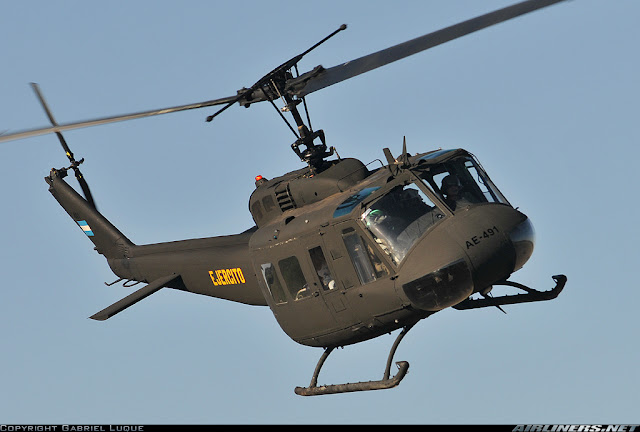





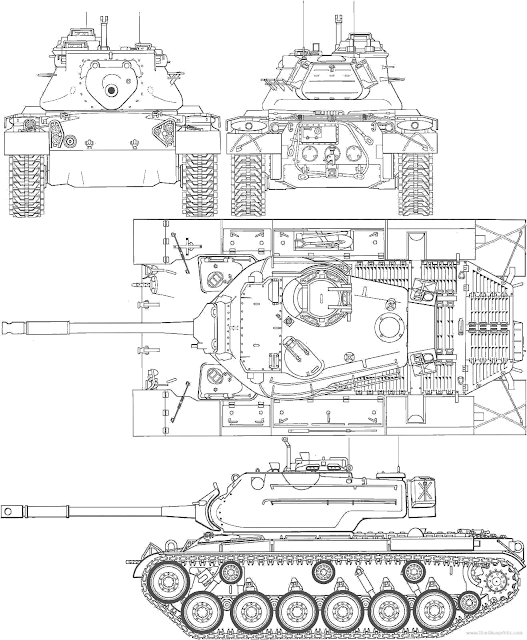









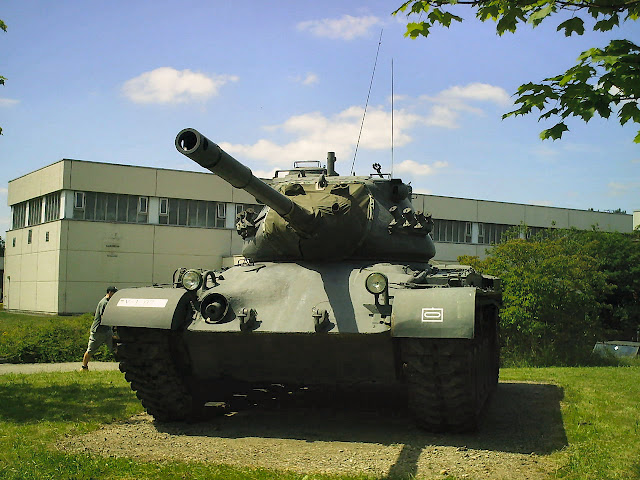







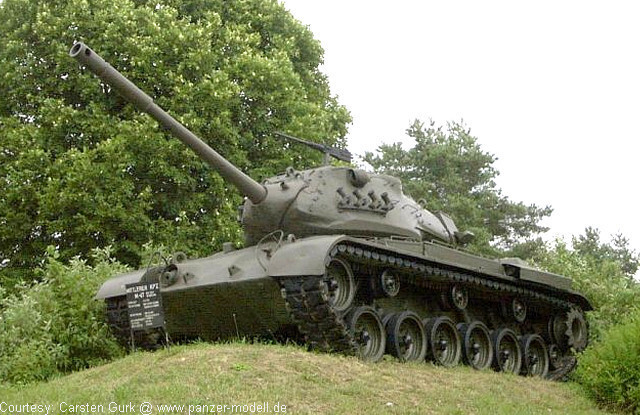













.jpg)



.jpg)





